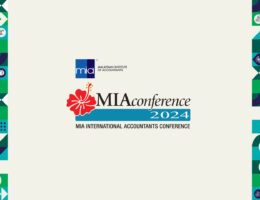Irene Yong, Partner, Tax and Revenue Practice Group, Shearn Delamore & Co, covered ten cases in her critical review of recent tax cases and tax developments at the 2018 MIA Budget Seminar. Below, we round up some of the key takeaways.
By Majella Gomes
Yong provided salient examples of the IRBM’s cases against taxpayers accused of transgressing tax laws, as well as cases where taxpayers challenged the IRBM’s findings and sought redress through legal channels. Among her key examples were H Sdn Bhd which argued that the IRBM had issued public rulings which were conflicting. The court ruled in H’s favour, and the IRBM settled.
In the case of DGIR (Director General of Inland Revenue) v United Malacca Bhd, land was compulsorily acquired by the government and late payment charges were treated as payment on income. The SCIT (Special Commissioners of Income Tax) found for the taxpayer, holding that late payment charges and reimbursement of retrenchment benefits (paid out by United Malacca Bhd in connection with the government’s acquisition of its land) should not be subject to income tax. On appeal by the IRBM, the High Court affirmed the SCIT’s decision, ruling that reimbursements do not incur tax.
The SCIT ruled in favour of CIMB Bank Bhd as well, in a case involving databases acquired by CIMB from another bank. The point in contention was whether such databases qualified for capital allowances. The DGIR assessed the databases as “goodwill” not “plant” and penalised CIMB, but the SCIT held that the databases were intangible assets that could be included under “plant” because these were tools used in the taxpayer’s business. The DGIR appealed to the High Court but the High Court agreed with the SCIT.
A case of Judicial Review was also presented, which involved the taxpayer seeking to quash the IRBM’s “decision” contained in a “letter of findings” – but while the High Court decided in favour of the respondent, on appeal, the Court of Appeal found for the IRBM, ruling that since the letter of findings did not constitute a decision, the taxpayer’s application had been prematurely filed and was an abuse of the court’s process. The taxpayer appears to be taking this case to the Federal Court.
The case of DGIR v Toxicol Sdn Bhd came about because of the loss of business rights. Although the SCIT initially found for the IRBM which had treated as revenue the RM23 million received by Toxicol (whose core business was the management, handling, removal and disposal of toxic waste) for the termination of its business, the High Court found for Toxicol because it had lost its business rights with the receipt of the RM23 million, under circumstances that had caused a forced sale. The IRBM’s appeal to the Court of Appeal was dismissed.
In another case, Kualiti Alam, a waste management company which collects, stores, treats and disposes of scheduled waste, claimed reinvestment allowance for plant and machinery but was rejected by the IRBM on the basis that the taxpayer was not manufacturing or processing products within the meaning of paragraph 8 of Schedule 7A of the ITA. While the SCIT found for the taxpayer, the High Court allowed the IRBM’s appeal because it felt that the taxpayer was providing a service.
Describing it as a “Blast from the Past,” Yong presented the case of KPHDN v SUEPP Bhd from 2001, which involved land acquired as far back as 1965, subsequently developed in the 1980s, revalued, then sold, and incorrectly assessed for real property gains tax, according to developer SUEPP. The SCIT held that these assets were stock-in-trade and therefore is subject to RPGT; SUEPP filed for judicial review, and both parties appealed to the High Court but later entered into a consent judgement to settle the case.
Multi-Purpose Holdings Bhd v DGIR involved investment holding company Multi-Purpose Holdings Bhd, which received dividend income from the holding of shares in various companies, and giving loans and deposits. The DGIR treated each counter of shares, each loan and all deposits as separate sources of MPHB’s income but the SCIT found for MPHB, holding that all these constituted a single source of income. The High Court found for MPHB; the IRBM did not appeal. Many groups of companies consequently benefitted from this ruling.
In FFHM Bhd v KPHDN, investment company FFHM took loans to finance business activities and that of its subsidiaries. It also lent or advanced money to these subsidiaries; some as interest-bearing loans and some as interest-free, and contended that both these types of loans constituted a single source of income – thus deductions should be given for all interest incurred. The SCIT disallowed the expenses on the non-interest bearing loans and held that interest-free loans granted to the subsidiaries were not a source of income, present or future; the High Court upheld the SCIT’s decision.






